In today’s post, we’re going to talk about how you can use the rule of odds in food photography to improve your compositions. It’s one of my favourite composition techniques to use, bringing balance to images with several subjects.
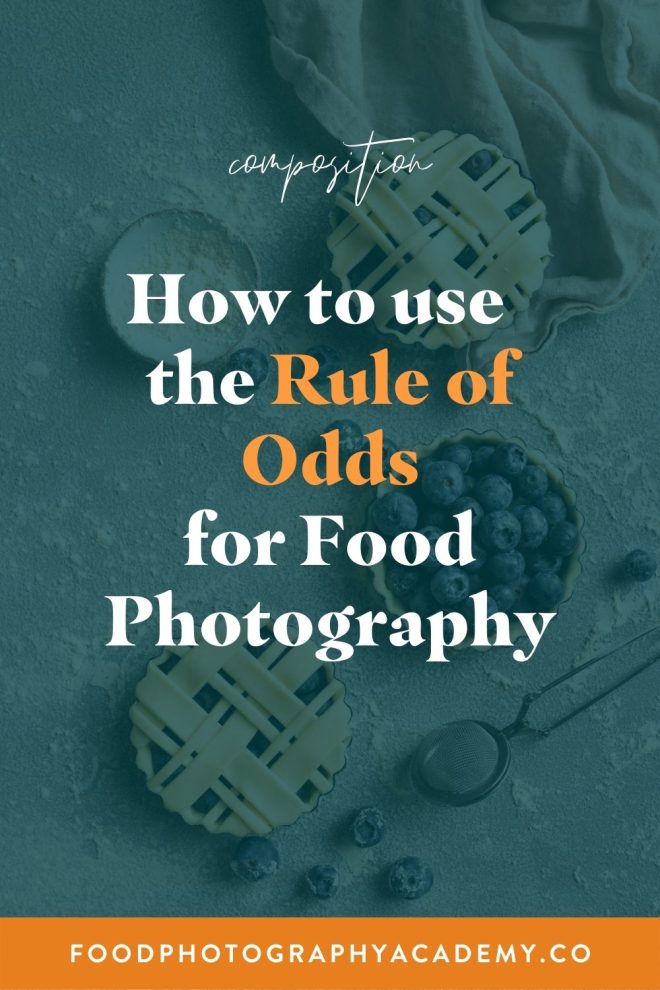
If your compositions are feeling a bit monotonous, or you’re stuck in a a creative rut, you can use composition techniques to jump start your creative juices and give you some new ways to explore food photography.
We’re going to spend some time talking about what the rule of odds is, why it works, and then I’m going to take you through some food photography examples of how I used the rule of odds to shoot some blueberry pie (because who doesn’t like blueberry pie?)
When you start delving into composition techniques, it doesn’t take long to realise there are about a million different ones you can try, and it can be pretty overwhelming if you’re new to using them. The rule of odds is a simple technique to start with, and will immediately help you frame your subjects in your composition.
To help get you started, I’ve got a free composition planning kit which you can download and print from the link below to help get you started. I’ll show you how I use this, a little bit later on.
Stop guessing and start implementing with my foolproof composition system. Elevate your food photography from good to great with composition techniques.
Free Resource
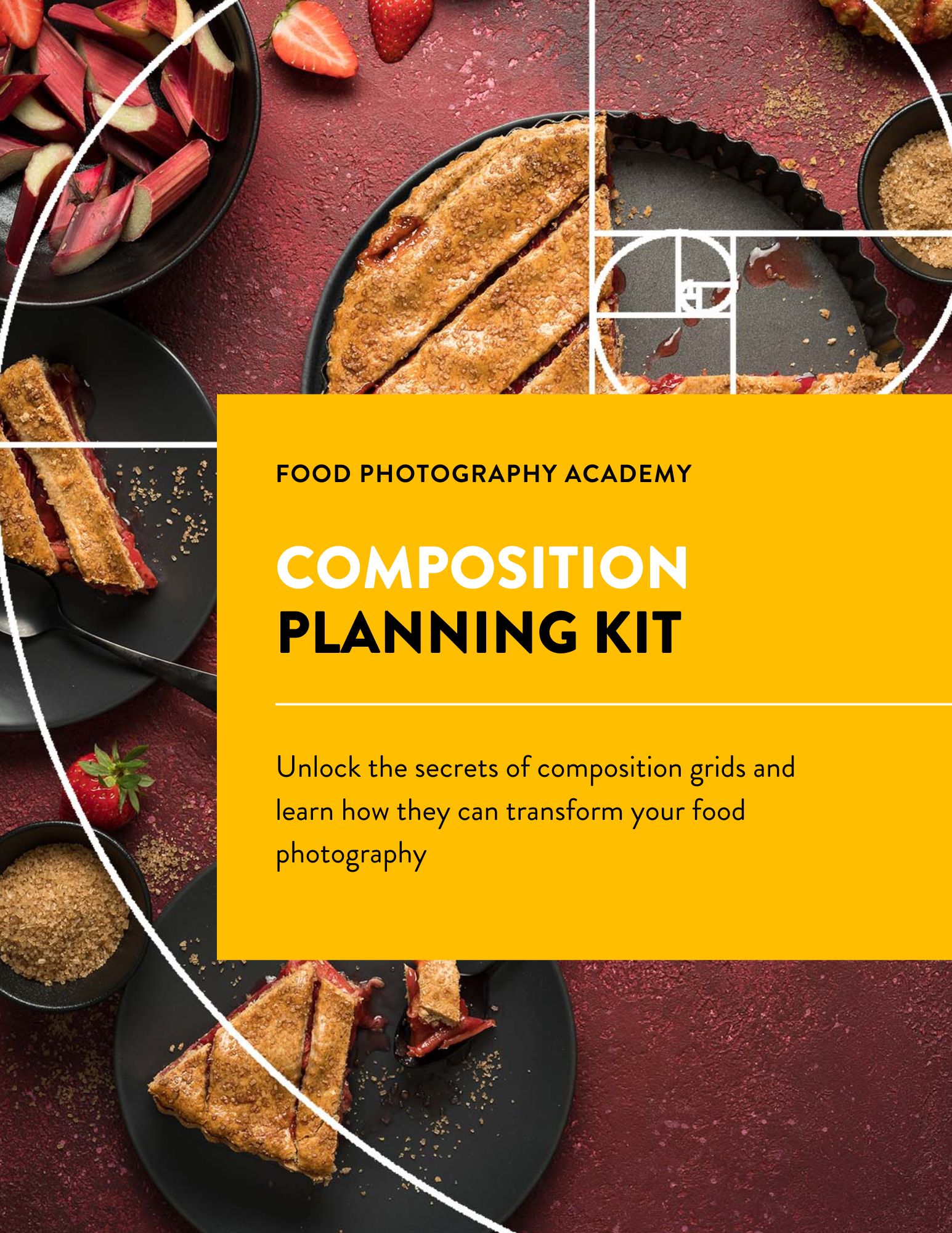
What is the Rule of Odds?
The rule of odds states that when you’re including a group of subjects in your photo, an odd number, rather than an even number will produce a more interesting, and visually pleasing composition.
In food photography, we’re often photographing a group of subjects, whether it’s cupcakes, pieces of fruit, several bowls of pasta or anything else, so it’s a rule that can be applied often.
When a frame includes an even number of subjects, like two or four, your brain tends to organise the subjects into pairs, which can make your compositions look a bit dull.
When you use the rule of odds to place one main subject in the frame, with two other supporting subjects, your eyes will naturally fall to a middle subject, giving your photo a focal point.
How to plan your food photos using the rule of odds
Something I do before every single shoot, is plan my photos by making a quick sketch of the structure.
This bit of planning allows me to spend a bit of time thinking through things like the composition technique I’m going to use, the camera angle, the props, the positioning, and I can get an idea on paper, of what my vision is for this shoot before I pick up my camera.
I’ve created a photography composition planning kit which you can download and print for free, just click below!
Stop guessing and start implementing with my foolproof composition system. Elevate your food photography from good to great with composition techniques.
Free Resource

I use this kit all the time, because it’s already mapped out with the right ratio, and I added the rule of thirds grid on top, to give you a starting point for planning out your composition.
Food photography examples using the rule of odds
We’re going to look at three different examples of the rule of odds in this post. I took three shots during this shoot of the blueberry pies, one with three subjects, one with five, and one with seven.
Example – three subjects
I wanted to keep this composition simple, so I placed the three pies in a line, creating that line shape we mentioned earlier, but that’s not the only shape created in this photo – more on this in a moment!
I used the rule of thirds grid on my composition kit to position each pie in the centre third. My sketch looked like this:
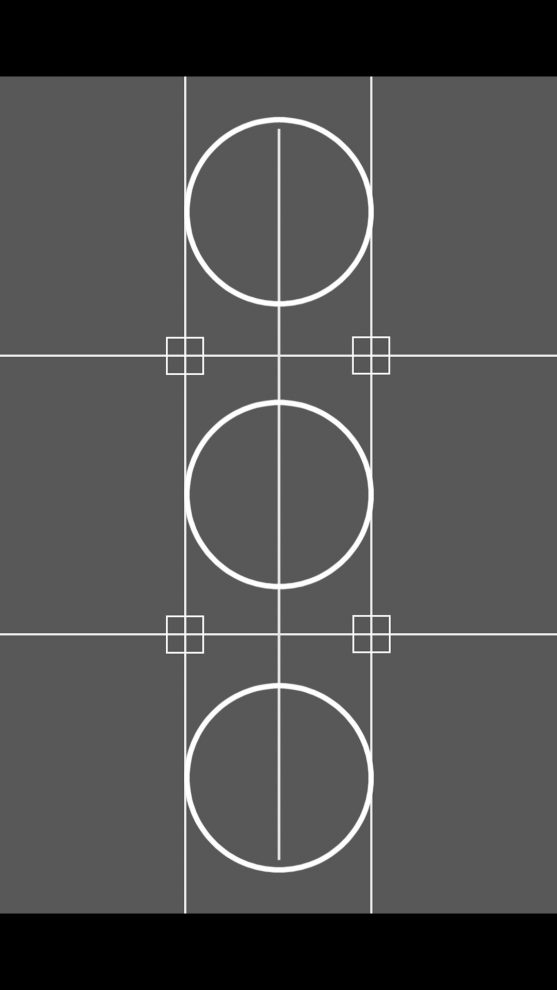
To keep things a bit interesting, I left one pie uncovered, to showcase the beautiful blueberries, and I decorated the other two pies with a few decorations.
While these decorations may look random, can you see the rule of odds in there too? I’ve placed the decorations in and around the pies in groups of 1 or 3, with the groups of three, forming triangles, which also adds interest to this composition.
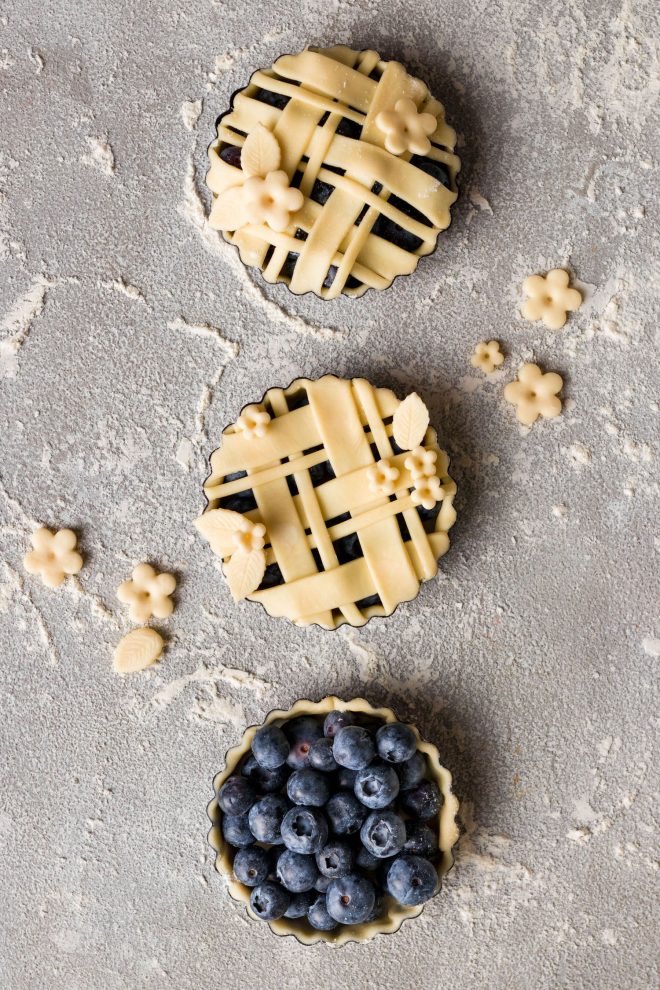
Example 2 – five subjects
Onto this next example, we’ve got five things going on, rather than three. This allows multiple triangle shapes to be present in the photo, framing each piece nicely. I still kept the main subjects to just three, to make sure that the photo had a focus.
Here’s how my plan looked on the composition kit:
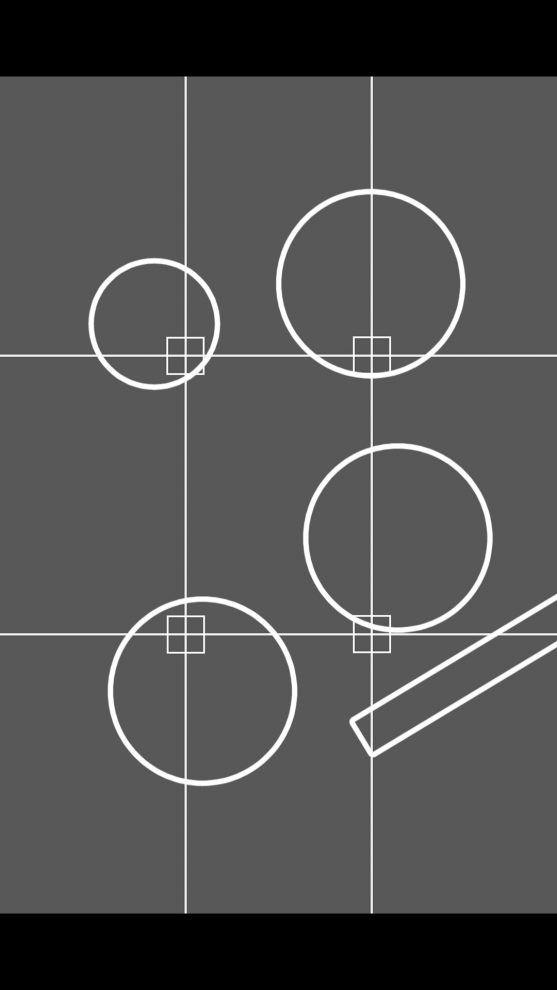
The extra white bowl and tea strainer act as nice complementary elements to the main photo. Don’t be afraid to use your props in this way, to add shape and direction to your food photos.
In order to help the white bowl fit into the scene, I added some flour to it, as it’s something that would naturally be found on a table where you were rolling out pastry. Whenever you’re thinking about adding an element to your photo, make sure that it makes sense with what you’re shooting, as everything that goes in the frame adds to your story.
Here’s how the final photo looks, using the rule of odds with five subjects:
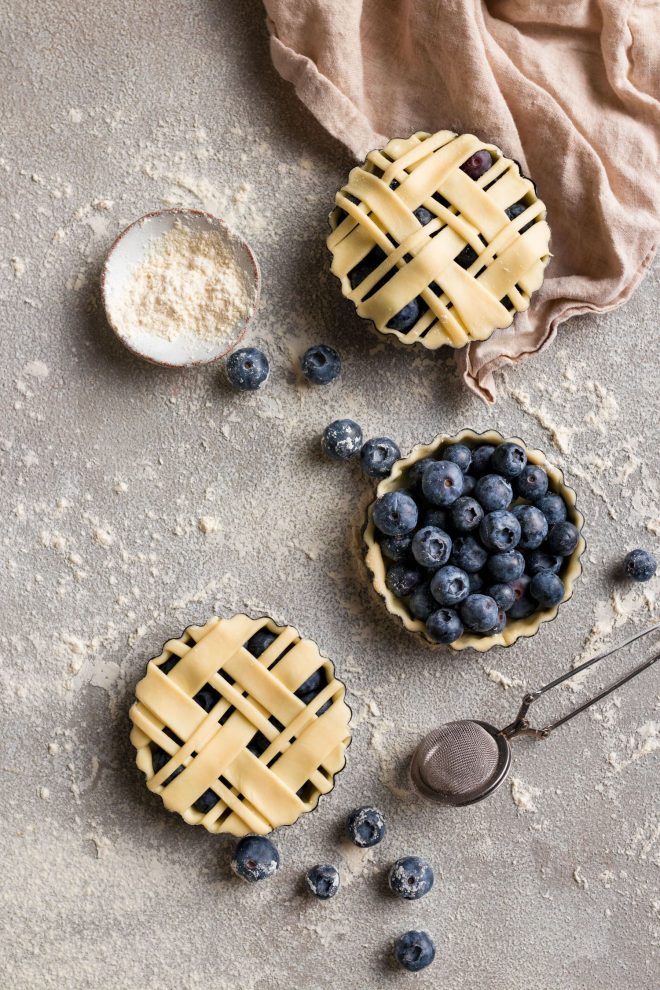
Example 3 – seven subjects
In the last example, we’re moving from five up to seven items. In this photo, I’ve used the three pies, plus four bowls, to create a diagonal line shape in the composition. When there are this many items in a photo, as well as the line shape there are also many triangles formed.
Here’s how this one looked in the plan:
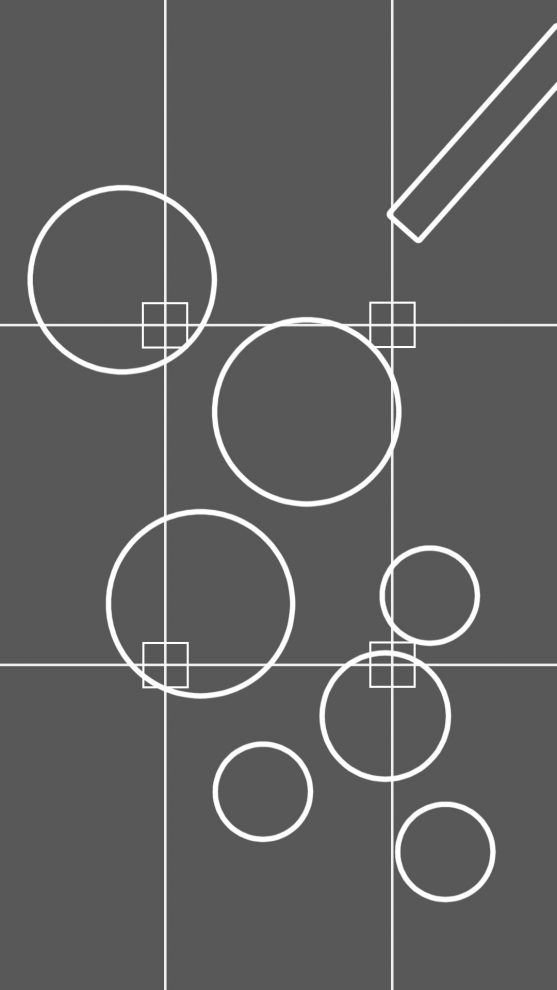
I moved the sieve into the corner and placed it on a napkin to make it a bit less central, so it no longer features as a main piece in the photo. Instead it acts like a leading line down to the main pies. Here’s the final photo:

When the rule of odds doesn’t work for food photography
Beyond seven items, your brain stops being able to tell the difference between an odd and an even number, and instead just sees many objects, so in that case, the rule of odds becomes a bit obsolete.
For example, in this photo of these blueberries, which I took just before I made these pies, there are so many, you would never know if there’s an odd or even number.

So there you have a simple but effective composition technique to try out in your food photography, the rule of odds. Don’t forget to download your free composition planning kit to help get you started with the rule of odds in your food photography!
Stop guessing and start implementing with my foolproof composition system. Elevate your food photography from good to great with composition techniques.
Free Resource

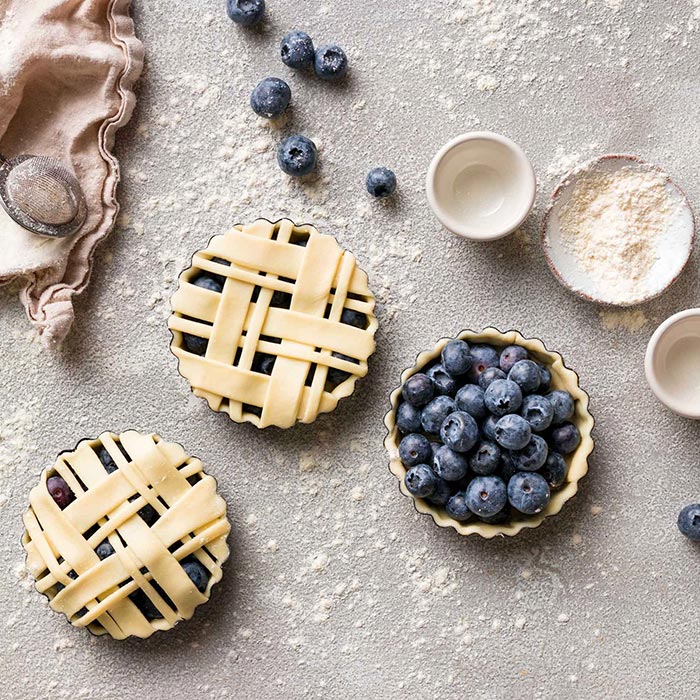
looks great
[…] Rule of OddsOur brain looks for evenness and symmetry, which make great photos… However, this principle […]
Informative blog, click here to know more
<a href=”https://jumpgrowth.com/top-10-web-development-frameworks/
“>Grocery app Development</a></li>
[…] The rule of thirds collaborates with the Rule of Odds through this capturing of three young men venturing through The Yard. According to the Rule of Odds, an odd number of subjects can “produce a more interesting, and more visually pleasing composition”, as stated by “Food Photography Academy”. […]
I’ve been struggling with taking photos for over a year for my tea business–and alot of the site I found to learn are a bit to complicated. Now I’m adding jams and scones and decided to look for a food photography blog on Pinterest– so glad to have found this post! thank you for creating an easy to understand post– I can’t wait to try these practices with some tea later today!
You’re so welcome Melanie! Can’t wait to see the images you create for your tea business!
Good
good
hello! may i know your youtube channel?
Thank you so much for these helpful tips!
[…] Source: That’s Sage […]
it’s so benefit and interesting , thanks ..